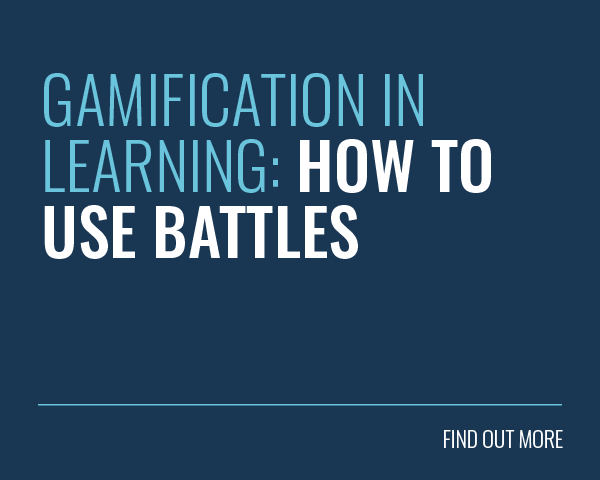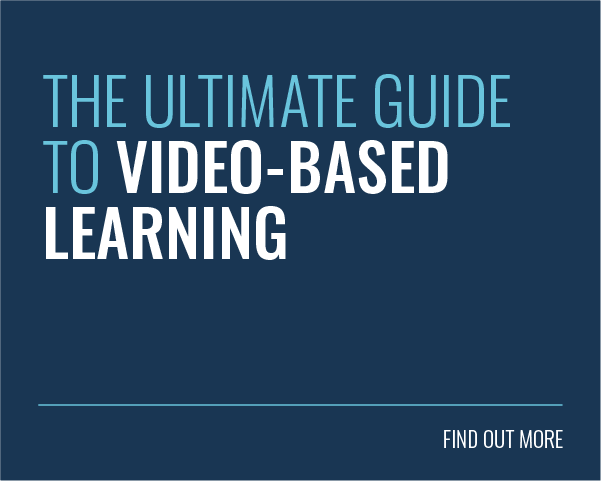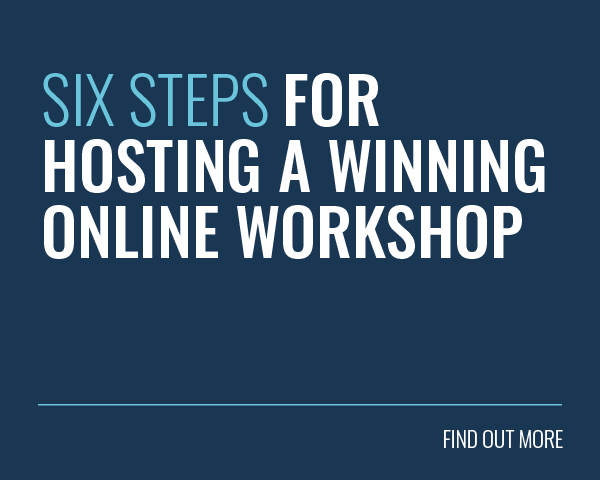 Whether you’re a seasoned instructional design veteran or a complete content creation greenhorn, your eLearning course structure matters. In fact, a good structure is often the difference between learning success and complete and outright failure. The stakes are high.
Whether you’re a seasoned instructional design veteran or a complete content creation greenhorn, your eLearning course structure matters. In fact, a good structure is often the difference between learning success and complete and outright failure. The stakes are high.
After all, a good course structure helps to guide your learners through your content. It provides milestones, progress markers, regular breaks and plenty of variety. This ensures your learners arrive at their destination satisfied and well informed.
In this sense, a good course structure acts like Virgil guiding Dante through the Nine Circles of Hell. We just hope that’s not a suitable point of comparison for your content.
You’ll be pleased to hear that we’ve also put some thought into the structure of this article. As we progress, we’ll provide a definition of course structure, discuss why it matters and share some examples that we’ve found to be effective.
What is the Course Structure?
What do we mean when we talk about the structure of an online learning course?
Structure refers to the arrangement or organisation of interrelated elements within a complex system or object of some kind. In other words, the structure of your online courses is determined by how you have arranged your topics, sub-topics and individual learning elements in relation to each other.
As the folks at Carnegie Mellon University put it, ‘course structure refers to the choice of topics and the organisation and sequencing of course content’. As such, when you move a content slide within your unit, you are making a structural change to your course.
Why Does Course Structure Matter?
The structure of your course helps to determine how your learning objectives will be met. If your course is poorly structured, it may be difficult for your learners to achieve these objectives. If a bridge is poorly constructed, travellers may be unable to get from one side to another.
eLearning helps learners to retain 25-60% of the content, compared with just 8-10% in face-to-face training. This is because eLearning course structure can be used to keep pulling learners back in with engagement features and interactivity.
As a content creator or instructional designer, your goal should be to guide your learners through your course with as little friction as possible. In turn, you should also use your course structure to deliver clear educational outcomes. This can result in a delicate balancing act.
Imagine trying to read a book without a beginning, middle or an end. You’d likely lose track of the plot pretty quickly (if you managed to grasp it in the first place). Likewise, watching a film that demonstrates a complete disregard for narrative structure can often be a painful experience.
Whilst there are exceptions to this rule, success can usually be found by holding firm to conventional structures and forms.
We believe there are four key reasons why the structure of your course matters. Let’s break them down.
1. Course Structure Guides Your Learners
To successfully communicate an idea, you need to present it in a certain way. This usually involves a welcoming and informative introduction that sets the learner up for success. This is then followed by a series of coherent learning materials that are presented in a logical sequence.
This sequence should allow knowledge to build over time. Any new information presented, should help to develop the learner’s mastery over the topic at hand. Finally, you will need a purposeful conclusion to help wrap things up.
Without this simple structure, your course will feel illogical to your learners and it may be difficult for them to make progress. Your course structure should take your learners by the hand and guide them through the journey, regardless of how tricky it may be.
2. Course Structure Maintains Learner Engagement
There’s more to your course structure than simply laying out your learning materials in a logical flow. You also need to ensure that you maintain your learners’ attention throughout. With a variety of distractions to attend to, this can often be difficult. That’s why it’s so important to ensure that your course has an engagement focus.
To prevent your learners from tuning out, you should ensure your course contains a variety of multimedia assets. Don’t rely too heavily on text and images to communicate important ideas. Ensure you also incorporate video content (however basic it may be), interactive elements and quiz questions to check your learners’ progress.
If you find yourself sticking to one learning approach too often, then that’s a sure sign that you need to mix things up. Variety is the spice of life, after all.
3. Course Structure Carves an Efficient Path
The structure of your course serves another important role. It should ensure that information is delivered to your learners in the most efficient manner possible. Remember, your learners are busy people with many responsibilities to attend to. As such, it’s important that your course communicates its core ideas in a streamlined and dynamic fashion.
This means that you should avoid treading over old ground (unless you are intentionally attempting to reinforce important information) or meandering away from key learning points. You can achieve this goal, by ensuring that you have a clearly stated learning objective and challenging yourself to achieve this ambition in the shortest time frame possible.
4. Course Structure Provides Suitable Breaks
Last but not least, your course structure should prevent your learners from ever feeling overloaded with information. As John Sweller noted when developing Cognitive Load Theory, our working memories have a limited capacity. It can only hold four to five pieces of new information at any one time.
As such, we need a tailored instructional approach that presents information in an easy to digest format.
This is partly achieved by communicating information in an efficient manner. But your course structure should also ensure regular breaks are programmed into the learning journey. This can be easily accomplished by breaking your content down into topics and focused sub-topics. This limits the size of your course and makes your learning objectives easier to achieve.
Where to Start?
Now we know why course structure matters, we are in a better position to begin developing course structures of our own. But where’s the best place to start?
The structure of your course will vary depending on the nature of the content you are covering. For instance, a course that covers health and safety protocols for your organisation will have a different structure than a course that covers presentation skills. There is no one-size-fits-all course structure.
As such, you should start by conducting a full training needs analysis. This will help you to understand the knowledge gaps in your audience and determine where you should focus your efforts. Your analysis should enable you to develop a clear learning objective for your course.
Once you’ve set the learning objective, you should start thinking about the most efficient route to achieve this goal. By keeping the objective in mind, you can make informed decisions about which content to include, which instructional methods to use and how you’ll check that your learners have taken the information on board.
Make it Micro
Did you know that the average adult loses focus after just seven minutes? You have limited time with your learners. As such, it’s important that you make good use of it.
We recommend breaking your course content down into the smallest possible microunits. To do this, you should take your overarching topic and divide it into subtopics, each with their own unique learning objective. You can then map a logical content flow to each subtopic.
At each stage you should ask yourself the following question: have I included any extraneous or irrelevant information within this microunit? Challenge yourself to communicate your ideas in a more efficient and engaging manner. Keep iterating and fine-tuning your course structure until it’s the best possible version of itself.
Whilst a microlearning approach places limitations on the amount of information you can present to your learners, it does provide other advantages. It’s more engaging, offers more flexibility and it’s easier to digest. This usually results in higher knowledge retention among your learners. What’s not to love?
Setting the Structure
If you’ve followed the steps above, then your course structure should come together in a natural and organic way. You should ensure that you’ve included a title slide, learning objectives slide, quiz questions and a conclusion.
To provide you with further guidance, we have included an example course structure below. As there is no one-size-fits-all course structure, you should tailor your course and your instructional approach in line with your learning objective.
An Example Course Structure
- Title Slide: This is the first slide learners will see when they launch the course. Your title slide should articulate the focus of the content. It should also drive anticipation and excitement about the upcoming learning journey.
- Setup Slide: Your next slide should inform your learners about any requirements relating to your course. This is your opportunity to encourage learners to optimise their learning environment.
- Learning Objectives Slide: You should state the goal of your course upfront, so your learners understand where this journey will take them. This provides useful context for your learners as they navigate through your content.
- Introduction Slide: You’re now ready to launch into your content. You should start by introducing the topic with a broad overview. A good introduction identifies the topic, provides context and provokes interest.
- Discovery Method Slide #1: Ask your learners what they expect to get out of the course. This approach helps your learners to set their own goals, which can increase their buy-in. Within the Genie Content Authoring Tool, this can be achieved by using the ‘Discovery Method’ question type.
- Content Slides: You will use these slides to communicate the ideas and concepts that will drive your audience towards your pre-set learning objective. Remember to offer a variety of multimedia assets to maintain your learners’ interest.
- Quiz Questions: Quizzes offer learners an opportunity to review what they’ve learned and ensure they understand the key concepts of your course. We recommend including 3-5 quiz questions at the back-end of your course.
- Discovery Method Slide #2: Before you wrap things up, be sure to check back in with your learners. Ask them if they got everything they wanted from the course. Prompt them to reflect on what they’ve learned. This is a great way to drive home the information you’ve presented.
- Conclusion Slide: You’ve made it! Your conclusion should briefly restate the main points of your course. We also recommend including a final thought that highlights the significance of what’s been learned and a call to action that spurs your learners on!
The Nine Levels of Learning
Need further support? Then check out Robert Gagne’s Nine Levels of Learning. He broke the learning process down into nine clear steps and laid the groundwork for good instruction. The ‘Nine Levels of Learning’ help trainers and educators to structure their content in the right way and provide a framework for creating instructional activities.
Final Word
This brings us neatly to the conclusion of the article.
Your eLearning courses are not formless masses. They have a meaningful shape and structure to them. By taking the time to develop a good structure for your courses, you are working to ensure you can deliver against your learning objectives. This process fine-tunes the learning experience for your knowledge-hungry audience.
Part of this undertaking involves breaking your content down into easily digestible chunks. This microlearning approach makes your content easier to consume and helps to improve learning outcomes.
Plotting your course structure is a continuous process. It often requires iteration and optimisation. But it’s important that you get it right. A good course structure provides a framework for learning success. Without it, you’re leaving everything up to chance.
Have you mastered course structure? Then let’s get building. Sign-up for a free 21-day trial of the Genie Content Authoring Tool today to start creating high-impact, super engaging learning content quicker than ever before.






